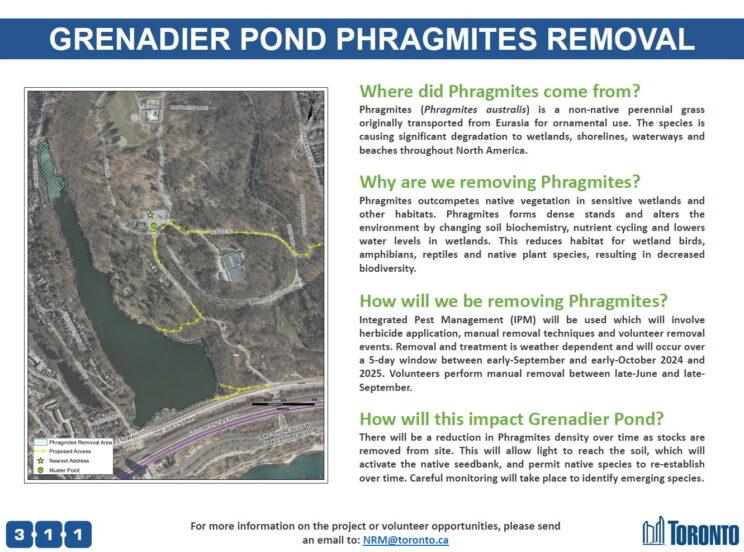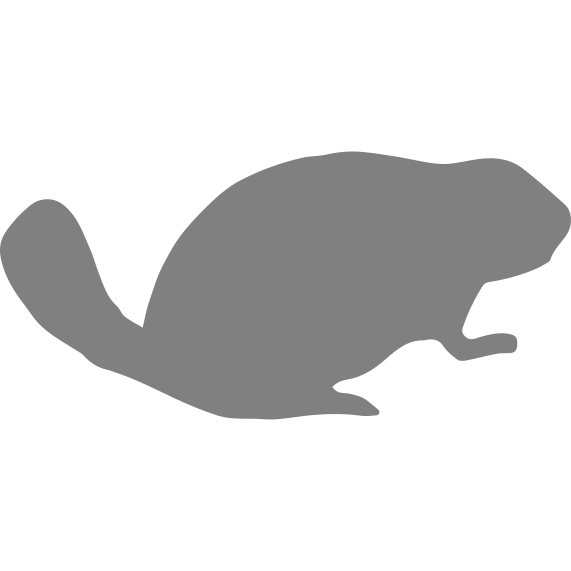Phragmites removal at Grenadier Pond is tentatively scheduled for September 16 to 20, 2024, weather dependent. The following information has been provided by Urban Forestry:
Our goal for this project is to significantly reduce the Phragmites population size over the next 1-2 years using both chemical and non-chemical methods. Following the initial management intervention, manual management strategies (or a combination of other demonstrated strategies) will be used for long-term maintenance of the population. This Integrated Pest Management Plan has been informed by 20 + years of research and has been demonstrated to be effective at removing Phragmites, while doing the least amount of harm to the environment. These strategies are documented in the Best Management Practices developed by the Ontario Invasive Plant Council through consultation with researchers and other industry leaders.
In order to create a comprehensive Phragmites control plan, Urban Forestry has collaborated with the Toronto and Region Conservation Authority (TRCA) and Invasive Phragmites Control Centre (IPCC) to carry-out this project.
TRCA are leaders in conserving, restoring and managing waterways and wetlands throughout the City of Toronto and surrounding region. TRCA has been involved with data collection, monitoring, and restoration work in Grenadier Pond, and led the initial Phragmites management project in 2018. Urban Forestry has hired TRCA to lead the contract with IPCC to perform the Phragmites removal in Grenadier Pond.
Dr. Janice Gilbert is a wetland ecologist and is the Founder and Executive Director of the IPCC with over 20 years experience researching, monitoring, and managing Phragmites. Dr. Gilbert established the Ontario Phragmites Working Group (OPWG) in 2011 and serves as the Co-Chair. Her organization also provides Phragmites management advice, develops management plans, and manages all aspects of Phragmites control for several organizations including all levels of government and NGOs. She and her team have ample experience working in sensitive habitats and have successfully restored many sites across Southern Ontario.
Due to the establishment of these extensive Phragmites stands within and around the pond’s shoreline, a combination of chemical and non-chemical methods will be used. RoundUp WeatherPro (glyphosate) will be applied to terrestrial Phragmites (on land), while Habitat Aqua (imazapyr) will target aquatic populations (in water). Non-chemical methods, including the use of an amphibious cutting machine (Truxor) and manual techniques like spading and cut-to-drown, will be employed to manage Phragmites. Since June 2024, volunteers from the High Park Volunteer Stewardship Program have been regularly spading in the southern portion of the pond, where the infestation is in its early stages and mixed with native plant species. Ten to twenty volunteers have attended each event and to date they have spaded approximately 350 m2. If you would like to attend any volunteer events, please contact nrm@toronto.ca.
See also: Phragmites in High Park

















